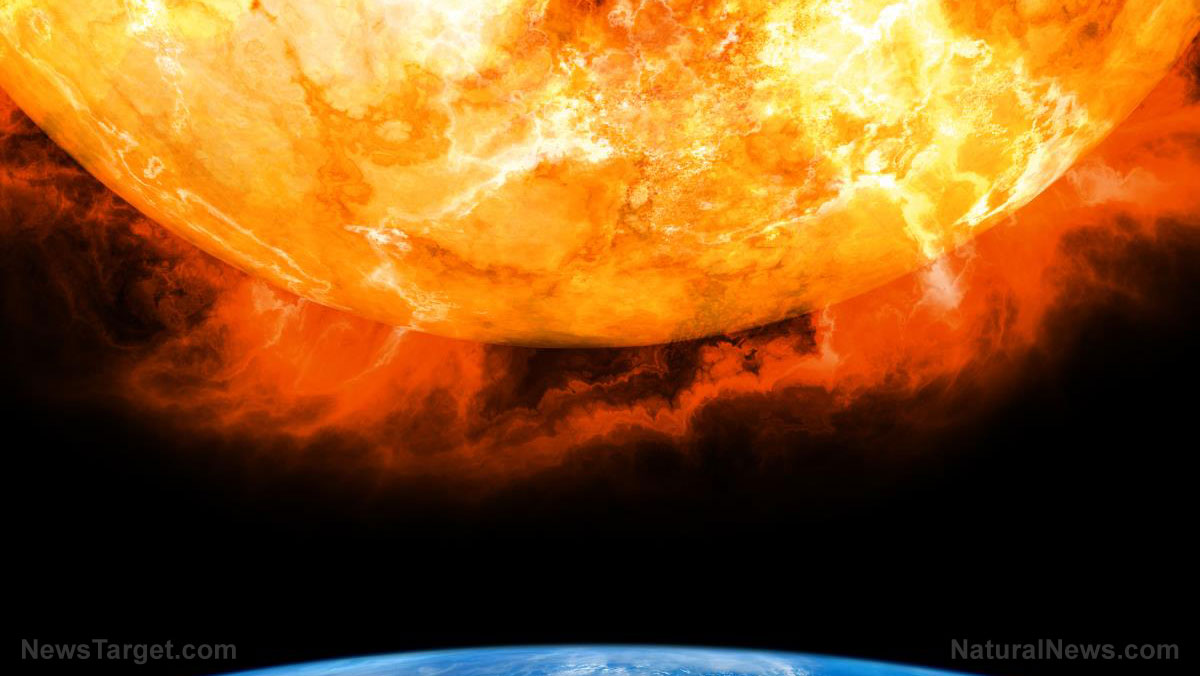
(Natural News) Despite its age, our Sun still packs quite a punch. In a new study published in The Astrophysical Journal, an international team of astronomers found that the Sun is still capable of producing superflares, which are powerful bursts of radiation capable of frying communication lines and triggering large-scale blackouts. They can also cause widespread disruption and damage to electronic devices similar to electromagnetic pulses or EMPs.
Astronomer Yuta Notsu, a visiting researcher at the University of Colorado, Boulder, said that while superflares are mainly observed in young, active stars, data collected by the Kepler Space Telescope revealed that even middle-aged stars like our Sun are still capable of throwing out “astoundingly powerful” flares.
Notsu, the study’s co-author, said he and his team came up with the conclusion after looking at data gathered by the Kepler Space Telescope over the past 10 years, and then comparing them with data taken from the European Space Agency’s Gaia spacecraft and the Apache Point Observatory in New Mexico.
After looking at a sample of about 90,000 stars, the researchers identified 300 stars which, over the course of 500 days, were observed to have produced over 1,000 superflares. After adding data from the Gaia space telescope, the researchers whittled the group down to just 113 stars – all of them Sun-like in terms of size and temperature.
Notsu added that they were able to gauge the power emitted by these stars’ flares by taking note of how fast they spun, noting that younger stars, or those that rotated once every few days, had superflares 20 times more powerful than the ones emitted by slowly spinning stars like the Sun, which rotates about once every 25 days. (Related: NASA says the solar flare that caused a radio blackout last September was the biggest flare in a decade.)
Support our mission and protect your health: Organic Seeds of Life combines Red Raspberry Seed Power, Black Cumin Seed Power and Red Grape Seed Powder into the most potent nutrient-rich supplemental superfood powder you've ever experienced. Loaded with flavonoids, antioxidants, anthocyanins, OPCs, ALA and a vast array of vital nutrients. Learn more here.
The younger stars were also observed to release superflares at a more frequent rate compared to the much older ones.
“Young stars have superflares once every week or so. For the Sun, it’s once every few thousand years on average,” Notsu said.
Despite the relative rarity of the Sun producing superflares, Notsu said there is still a distinct possibility that we could experience such an event, especially since a similar occurrence already wreaked havoc here on Earth just over a hundred years ago: the Carrington Event.
A geomagnetic storm triggered by a “moderate solar flare” on September 1859, the Carrington Event not only caused the formation of auroras, it also wreaked havoc on telegraph networks across North America and Europe, with cosmically overcharged telegraph lines reported to have started fires and even shocking telegraph operators.
A superflare could do even more damage, according to Notsu.
“If a superflare occurred 1,000 years ago, it was probably no big problem. People may have seen a large aurora,” Notsu said. “Now, it’s a much bigger problem because of our electronics.”
While there is still no way to predict the scale and scope of such an event, Notsu enumerated several problems that could occur should the Sun send a superflare our way within the next century: “We can now expect things such as large-scale blackouts, satellite communication failure, and strong radiation in space.”
The last two, Notsu added, can do serious damage to instruments and astronauts alike. He stressed the need to prepare for what looks to be an inevitable cosmic event, noting that we need to work on protecting our electronics by investing not just in radiation shielding, but also backup systems.
Sources include:
















